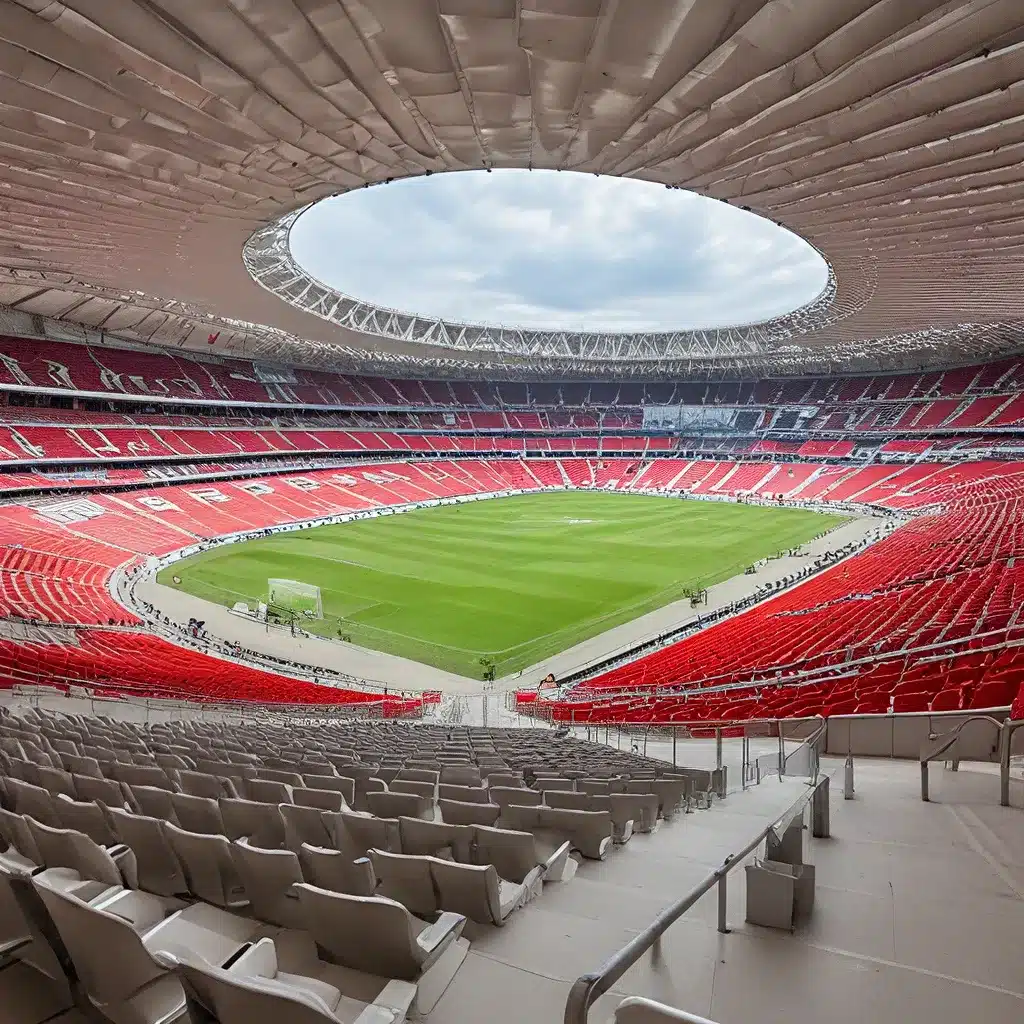
The Allianz Arena in Munich, Germany, is one of the most iconic and technologically advanced stadiums in the world. This architectural marvel has not only hosted some of the most thrilling football (soccer) matches but also serves as a symbol of the city’s rich cultural heritage. As the home ground of the renowned Bundesliga club FC Bayern Munich, the Allianz Arena has witnessed countless moments of triumph and ecstasy, captivating fans from around the globe.
The Birth of a Landmark
The Allianz Arena’s story began in the early 2000s when FC Bayern Munich and TSV 1860 Munich decided to build a new, state-of-the-art stadium to replace their aging home grounds. After extensive planning and discussions, the city of Munich approved the construction of the new stadium, which was set to be located on the outskirts of the city, near the Fröttmaning district.
The design of the Allianz Arena was entrusted to the renowned architecture firm Herzog & de Meuron, known for their innovative and cutting-edge projects. The architects envisioned a stadium that would not only serve as a functional venue for football matches but also become a landmark that would captivate and inspire visitors. The result was a truly remarkable structure that showcased the best of modern architecture and engineering.
Architectural Brilliance
The Allianz Arena is truly a marvel of modern engineering and design. The stadium’s most distinctive feature is its inflatable, translucent facade that can be illuminated in various colors, creating a mesmerizing visual effect. This innovative design allows the stadium to take on different appearances, depending on the occasion or the team playing.
The stadium’s innovative construction also features a retractable roof, which can be opened or closed in just 15 minutes, allowing for better climate control and the ability to host events in all weather conditions. The Allianz Arena’s seating capacity of over 75,000 ensures that it can accommodate large crowds for major football matches, concerts, and other events.
A Multipurpose Venue
While the Allianz Arena is primarily known as the home stadium of FC Bayern Munich, it has also played host to a wide range of other events and activities. The stadium has been the venue for several international football matches, including games during the 2006 FIFA World Cup and the 2020 UEFA European Championship.
In addition to football, the Allianz Arena has also been used for numerous other events, including concerts, religious gatherings, and even ice hockey matches. The stadium’s versatility and state-of-the-art facilities have made it a popular choice for a wide range of events and activities.
Iconic Moments and Memorable Matches
The Allianz Arena has witnessed numerous iconic moments and unforgettable matches since its inauguration in 2005. One of the most memorable events was the 2006 FIFA World Cup, where the stadium hosted several matches, including the semi-final between Germany and Italy, which ended in a thrilling penalty shootout.
The Allianz Arena has also been the stage for many of FC Bayern Munich’s most important matches, including UEFA Champions League finals and Bundesliga title-deciding games. The stadium’s electric atmosphere and the passion of the Bayern Munich supporters have created countless unforgettable moments, cementing the Allianz Arena’s status as one of the most iconic football stadiums in the world.
Sustainability and Innovation
The Allianz Arena is not only a architectural masterpiece but also a shining example of sustainable and eco-friendly design. The stadium’s innovative facade, which can be illuminated in various colors, is made from ETFE (Ethylene Tetrafluoroethylene), a lightweight and highly durable material that is also energy-efficient.
The Allianz Arena also features a comprehensive waste management system, water recycling, and energy-efficient lighting, making it one of the most sustainable stadiums in the world. The stadium’s commitment to environmental responsibility has earned it numerous awards and accolades, further solidifying its reputation as a leader in sustainable stadium design.
A Destination for Football Enthusiasts
The Allianz Arena has become a must-visit destination for football enthusiasts from around the world. Fans can take a guided tour of the stadium, where they can explore the various facilities, including the players’ locker rooms, the press box, and the pitch itself. The stadium’s museum also offers a glimpse into the rich history of FC Bayern Munich, providing visitors with a deeper understanding of the club’s legacy and its significance within the city of Munich.
Beyond the stadium itself, the Allianz Arena is also part of a larger sports and entertainment complex that includes the Olympiapark, BMW Welt, and the BMW Museum. This vibrant hub offers visitors a wide range of activities and experiences, making it an essential part of any visit to Munich.
Conclusion
The Allianz Arena in Munich is a true testament to the power of architecture, engineering, and sports to captivate and inspire. From its innovative design to its rich history and cultural significance, this stadium has become a beloved landmark that showcases the best of Munich’s sports and entertainment scene. Whether you’re a die-hard football fan or simply someone who appreciates the beauty of modern architecture, a visit to the Allianz Arena is an experience that will leave a lasting impression. So, if you’re planning a trip to Munich, be sure to add the Allianz Arena to your itinerary and explore the rich history and excitement that this iconic stadium has to offer.

